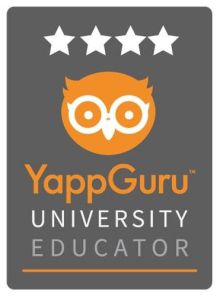Those who follow the Speech Dudes on Twitter (@speechdudes) may recall a mysterious tweet from December 28th, 2012, that referred to something called the Monteverde Invincia fountain pen.
 And those who are regular readers of this blog may vaguely recall that one of the Dudes has a passion for pens that marks him out as being either very old-fashioned, slightly quirky, or perhaps requiring of medication. But the Invincia is a pen of such style, charm, and delicious darkness that I’m guessing at least one of you out there will be ponying up the $75 just to get one of these wonderful objects of desire in your hand. Literally.
And those who are regular readers of this blog may vaguely recall that one of the Dudes has a passion for pens that marks him out as being either very old-fashioned, slightly quirky, or perhaps requiring of medication. But the Invincia is a pen of such style, charm, and delicious darkness that I’m guessing at least one of you out there will be ponying up the $75 just to get one of these wonderful objects of desire in your hand. Literally.
But first, because this is, after all, a blog written by SLP’s for other SLP’s, educators, language lovers, and all moms and dads with a curious bent, let’s talk a little bit about vocabulary.
In the field of augmentative and alternative communication, where the Dudes earn their daily crusts, it’s common to talk about words as being either core or fringe. Actually, up until five years ago, it wasn’t always that common but the proliferation of apps for tablets has seen the words core and fringe become almost essential to the marketing blurb of any of these apps – whether or not it’s true. Just tossing the words out doesn’t make an app a good communication tool, nor does copying what other folks have done and dropping it into a few pages make it any better. No, app creators need to learn what the words really mean before using them as sales jargon [1].
But if you are serious about creating a word-based solution, you can use the following definitions to help you in your quest:
Core Word: A word with a high frequency-of-use value that is also what you might expect to see statistically when you compare it to a large reference corpus.
Fringe Word: A word with a low frequency-of-use value that is also what you might expect to see statistically when you compare it to a large reference corpus.
Keyword: A word that has a higher frequency-of-use than what you might statistically expect when you compare it to a large reference corpus.
You’ll notice that I have purposely defined these as statistical phenomena and not as actual words that may be referred to as “useful,” “necessary,” “essential,” “uncommon,” or any other such subjectively nuanced adjectives. You’ve hopefully also picked up on the notion that there needs to be a “reference corpus” of some sort. The best reference corpus I suggest is one I like to call “the English language” because that is the thing that we all need to use in order to communicate with one another. So using the Corpus of Contemporary American or the British National Corpus is fair game. And when it comes to core vocabulary, you’ll find that even if you look at the small vocabulary lists that have been collected in the AAC field from different age group across different situations, you’ll find the same words are common to all [2].
If you’re already working in AAC, you may not be familiar with the use of the term keyword but it’s taken from the world of Corpus Linguistics and I find it a very useful concept to apply. For example, in the world of education, when folks talk about “core words” in relation to Core Communication Standards, they are really talking about keywords; the word vertex is a “core word” in math but is a keyword from an AAC perspective.
Keywords are words which are significantly more frequent in a sample of text than would be expected, given their frequency in a large general reference corpus. (Stubbs, 2010) [3]
So, let’s go back to my encomium [4] on the Monteverde Invicia Stylus pen and see what we can learn about core words, fringe words, and keywords.
The first thing is that the world of pens and paper has specialized vocabulary – or more specifically uses some words in specialized ways. This would be keyword vocabulary within the domain of “Fine Writing.” Thus, the word nib is statistically a fringe word when compared to a general vocabulary but becomes a keyword within the context of discussing fountain pens. In essence, keywords are typically domain-specific items and a sub-set of fringe.
To give you a feel for what keywords you might find, I did a quick(ish) analysis based on a 10,000 word corpus created from a popular blog about fountain pens and their use. Using WordSmith 6 software, I created a word list based on the text from the blog, then used the KeyWord facility to determine the top 2o keywords in the sample i.e. those words that were being used statistically more than you might expect when compared with a standard reference (and in this case, my standard reference is the British National Corpus).
The following “league table” illustrated keyword vocabulary in the domain of Fine Writing.
The words fountain and pen appear separately but when you look at the concordance data, the two actually appear typically as fountain pen, so I wouldn’t regard fountain itself a keyword – the keyword is the compound noun, fountain pen. If I’d taken a few more minutes, I could have put the singular and plural forms together so we wouldn’t see separate entries for pen(s), ink(s), cartridge(s), converter(s), and color(s).
Knowing about such keyword vocabulary is, in fact, very useful. My enthusiasm for my new pen can be explained to you much more succinctly if I can use the keywords. For example, I recommend that if you want one of these pens, you are better off with the medium-sized nib because that will spread the ink out to facilitate clearly writing. Furthermore, since one of the great features of the pen is that it includes both a cartridge and a converter, knowing the words cartridge and converter is helpful! If I then explain that a converter is a small barrel that you can use to suck up ink from an ink bottle, you now know that by buying different inks you can choose which ink colors you’d like to have.
Vocabulary lesson aside, the pen is indeed a stylish addition to anyone’s fashion accessories. Its brushed metal, matt-black finish and fine ribbing give it a distinctive appearance with a hi-tech accent. Its darkness is reinforced by having a shiny black stainless-steel nib, which makes it look like the sort of pen Darth Vader might have used to sign the order authorizing the construction of the Death Star (“You don’t know the power of the Dark Side!”) or that Batman has somewhere on his utility belt (“Quick Robin, use the BatPen!”)
It writes smoothly and has the merest hint of a squeak as it glides across paper, which is not a bad thing in the world of fountain pens. It’s classed as a heavy pen (1.4 oz. or 4.0 grams) and so has a much more solid feel than some cheap, plastic ballpoint.
To boost its hi-tech credentials even more, the cap is tipped with conductive rubber so it can be used with a capacitive touchscreen; in short, you can write on your favorite tablet device! I’ve tested it with the Galaxy Tab 7″ display, the 10″ display model (my favorite), the iPad 3 , a Motorola Droid 3, Microsoft Surface, and all have worked just fine.
There is a white version of the pen available but that doesn’t appeal to me. It’s the blackness that makes it sharp! And with a retail price of $95, it may sound steep to those who are new to the world of fountain pens. But you can get it from Amazon for $75, and other Internet sources are quoting $65, so there are deals to be had.
Long term, there are lots of different inks to choose from. Monteverde offer a range of inks but you should check out Glenn’s Pens where there is a good article on Fountain Pen Ink along with a dizzying array of brands and color options [5]. Another great resource is The Goulet Pen Company, where you’ll also find videos related to pens and paper.
Oh, and it you do buy the pen, drop us a note – then we know who we won’t be able to impress by whipping out our Invicia’s!
Notes
[1] And while we’re at it, there is a special place in the nine circles of Hell (possibly the 8th) reserved for anyone who claims their app is “intuitive,” “ground-breaking,” or, heaven forbid, “game changing.” If it takes me fifteen minutes and four or five keystrokes to find a word like already, and if there is no way for me to actually find it other than hitting key after key after key until I stumble across it, you have NO right to talk about “intuitive,” “ground breaking,” or “game changing” – unless the “change” in question is to set AAC back 10 years by providing sub-par sops that do nothing more than provide a 10-minute solution that then requires hours and hours of fiddling to add all the stuff that was missing in the first place.
Just sayin’…
[2] If you want a list of a many vocabulary sources, there’s one available via this Dude Link! 
[3] Stubbs, M. (2010). Three concepts of keywords. In M. Bondi and M. Scott (Eds.) Keyness in Texts: Studies in Corpus Linguistics. John Benjamins Publishing: Philadelphia. Available via this Dude Link 
[4] Here’s one of those wonderful words that deserves to be taken out of the box now and again, dusted down, polished up, and tossed into a sentence just to brighten up an otherwise lexically turgid day. The OED defines encomium as “a high-flown expression of praise.” It come, via Latin, from the Greek enkomion (ἐγκώμιον) and ultimately eulogia (εὐλογία) or “eulogy,” which means “praise.” And yes, the logia element does mean “speaking” and is the same root as logos meaning “word.” Only the Dudes would bring you Classical Greek and make it interesting!
[5] My favorite ink at the moment is made by Diamine and called “Syrah,” a splendid dark-red that looks particularly fetching against the ivory paper of my Quo Vadis Havana journal. I use it in my Cross Torero Bourdeaux Croc, which is a broad-nibbed red colored pen that lives in my travel bag.











Pingback: SLP Corner: 28 Words to Boost Your Client’s Vocabulary | PediaStaff Pediatric SLP, OT and PT Blog
Pingback: Slicing & Dicing Language with Russell Cross
Pingback: Peppa Pig: Go Ahead and Let Your Kids Watch! | The Speech Dudes